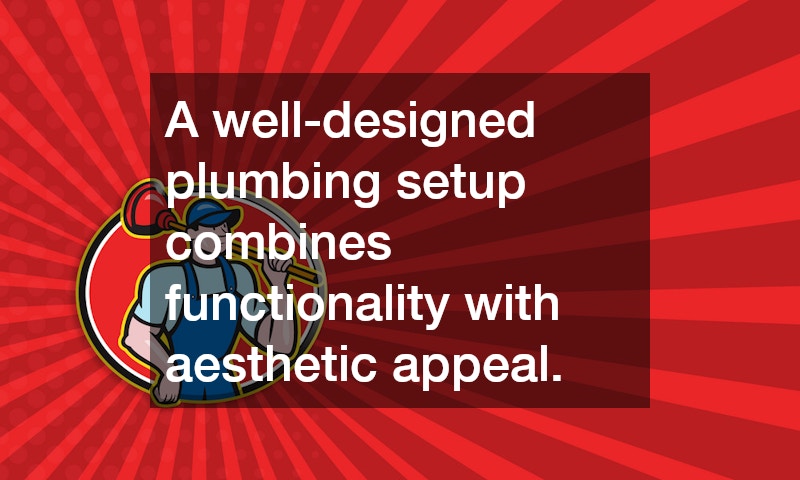Plumbing is often regarded as purely functional, yet for professionals in the field, it’s more than a matter of utility. Plumbing systems are crafted with a delicate balance of efficiency, precision, and even artistry. A well-designed plumbing setup combines functionality with aesthetic appeal, aligning with the architecture of a home or building to create a seamless experience.
Here, we explore the subtle artistry that plumbing professionals bring to the job—and how they blend speed and aesthetics to achieve perfection.
Efficiency First: Why Flow Matters
Flow is a critical factor in plumbing design. Plumbers know that when flow is optimized, water moves smoothly and quickly, without unnecessary noise or resistance. Achieving this requires careful calculations and precise installations to avoid clogs, leaks, or interruptions. Proper flow is not only about functionality; it also ensures minimal waste, lower energy consumption, and greater longevity of the plumbing system.
However, speed and efficiency can sometimes feel at odds with aesthetic considerations. For instance, in a bathroom or kitchen, pipe placement may seem arbitrary to the untrained eye, but skilled plumbers position pipes with both appearance and functionality in mind. Exposed pipes are often arranged in visually appealing patterns that suit the room’s layout, and hidden pipes are placed for optimal flow without compromising structural integrity.
The Aesthetics of Plumbing
Aesthetic plumbing design has become increasingly popular, especially in modern and industrial-style interiors. Exposed copper pipes, matte black finishes, and stainless steel fixtures all contribute to a refined look that homeowners appreciate. Some designers even treat plumbing as an architectural feature, using it to add character to the space.
Plumbing professionals understand that aesthetics shouldn’t compromise performance. For example, while certain materials like copper and stainless steel are beautiful, they’re also chosen for their durability and resistance to corrosion. The decision of whether to expose or conceal plumbing fixtures often depends on the design theme of the home, but it must also account for practicality. Exposed pipes may look stunning but require insulation and careful positioning to avoid potential heat loss or condensation issues.
The Role of Technology in Plumbing Design
Modern technology is helping plumbing experts refine both the functionality and aesthetics of their work. Software tools and 3D modeling allow plumbers to visualize the entire system before installation, ensuring that pipes, fixtures, and connections work harmoniously with the interior design.
Smart home technology has also introduced a new dimension to plumbing. From touchless faucets to digitally controlled showers, today’s plumbing fixtures are both stylish and high-tech, allowing homeowners to enjoy both convenience and elegance. Plumbing experts often work alongside designers and architects to make sure these innovations are integrated seamlessly without disrupting the flow or beauty of the space.
Achieving Balance: The Art of Harmonizing Speed and Aesthetics
Plumbing professionals are tasked with the unique challenge of balancing functionality and aesthetics in every project. For example, in a minimalist bathroom, they may choose to conceal pipes behind sleek walls or floors, keeping the space uncluttered and simple. On the other hand, in an industrial-style kitchen, they may highlight the plumbing, using it as a design feature to enhance the room’s raw, edgy appeal.
Creating this balance requires not only technical skill but an eye for design and a willingness to collaborate. The plumber must work closely with designers and homeowners to bring the vision to life while still delivering efficient, reliable systems. Every detail, from the angle of a pipe to the finish on a faucet, is carefully chosen to meet both practical needs and aesthetic desires.
Conclusion: Plumbing as an Art Form
Plumbing may not be the first thing that comes to mind when we think of art, but in the hands of a skilled professional, it becomes precisely that. The ability to blend speed, efficiency, and beauty is a testament to the craftsmanship that defines the profession. So next time you see an elegantly designed bathroom or a kitchen with stylish fixtures, remember the expertise that went into creating that harmony. Plumbing truly is the art of flow, making spaces both functional and beautiful, one pipe at a time.



